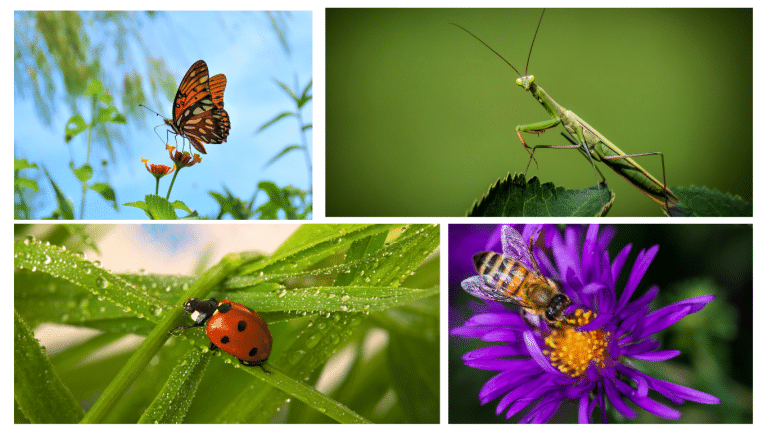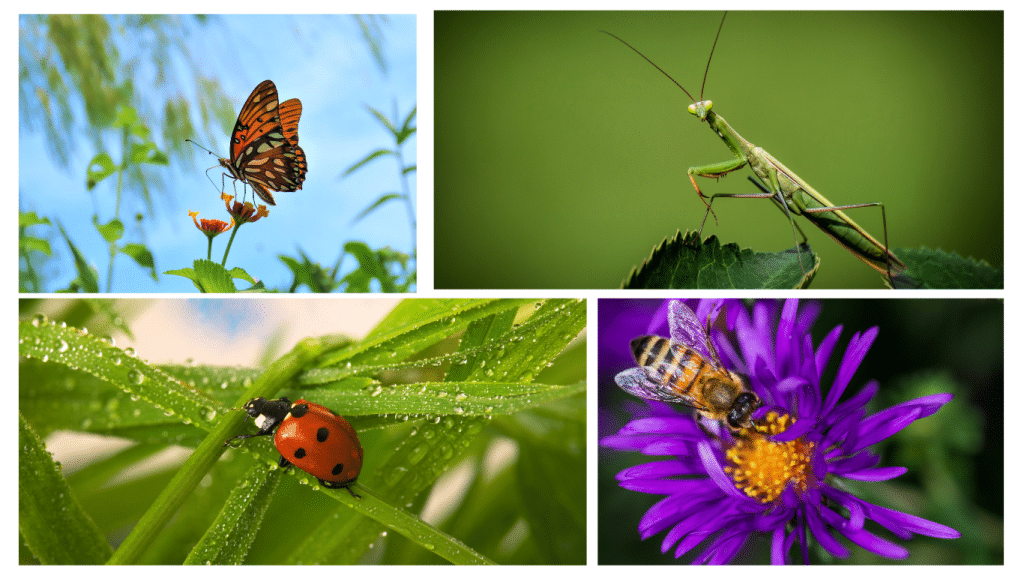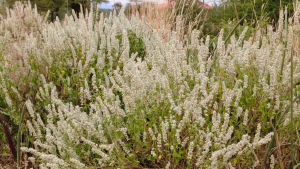
The vibrant world of an organic farm, where the buzz is not just about the freshest produce but also about the fascinating insect inhabitants that play crucial roles in the ecosystem. Uncovering the secret lives of these tiny, yet mighty, farm residents. From pollinators to pest controllers, big bugs to small bug, flying bugs to crawling bugs, each bug has a tale that’s both intriguing and vital for the farm’s health and productivity.

The Humble Honeybee: Nature's Master Pollinators
First, the humble honeybees, the farm’s buzzing workforce. These industrious insects are not just about honey; they’re pivotal in pollinating fruits, vegetables, and flowers. A single bee can visit thousands of flowers in a day, making them the superheroes of the plant world. But did you know that honeybees communicate through dances? The waggle dance, a figure-eight shuffle, tells fellow bees where to find the best flowers. It’s a bee GPS that guides them to nectar treasures, ensuring our plates are never empty of fruits and veggies.
Ladybugs: The Spotted Guardians
Next, we spot the charming ladybug, or as the scientists call them, lady beetles. Donning their iconic red and black spotted coats, ladybugs are not just a symbol of good luck; they’re voracious predators of aphids, mites, and other pests that threaten crops. A single ladybug can devour up to 5,000 aphids in its lifetime, making them organic farmers’ best friends. Plus, in a display of insect ingenuity, ladybugs secrete a fluid that makes them taste foul to predators, ensuring their survival in the farm’s miniature jungle.


Praying Mantises: The Silent Assassins
Lurking among the leaves, the praying mantis waits with monk-like patience. These green or brown warriors are named for their prominent front legs, which are folded in a prayer-like stance. But don’t be fooled; they are ruthless predators, capable of taking down insects much larger than themselves, including the occasional hummingbird. Praying mantises are a symbol of patience and precision, teaching us that sometimes, it’s about waiting for the perfect moment.
Butterflies: The Ecosystem Artists
Fluttering through the farm, butterflies add a splash of colour and grace. These flying masterpieces go through an incredible transformation from caterpillar to butterfly, showcasing nature’s magic. But beyond their beauty, butterflies are important pollinators.


Earthworms: The Underground Architects
While not your typical insect, earthworms deserve a shoutout in our farm tour. These wriggly architects tunnel through the soil, aerating it and making it more fertile for crops to grow. Their digestive process breaks down organic matter, turning it into nutrient-rich castings that enhance soil health. Earthworms are the unsung heroes of the organic farm, working tirelessly below our feet to ensure the ground above thrives.
Conclusion: A Symphony of Insects
Ambokili farm is a symphony of insects, each playing a vital role in the health and productivity of the ecosystem. From the pollinating buzz of the honeybees to the silent hunt of the praying mantis, these creatures are integral to our food systems. Their behaviours, feeding habits, and beauty are a testament to the resilience and complexity of nature. By understanding and appreciating these insects, we become better stewards of the land, ensuring that the buzz of life continues for generations to come.
In this tiny, bustling world, every insect is a story, every leaf a chapter. And as we turn the pages, we uncover the intertwined narratives of agriculture and the insects that sustain it. So, the next time you enjoy a bite of an apple or marvel at a flower, remember the tiny inhabitants of the organic farm that made it possible. In the dance of nature, every buzz, flutter, and crawl play a critical part in the melody of life.







